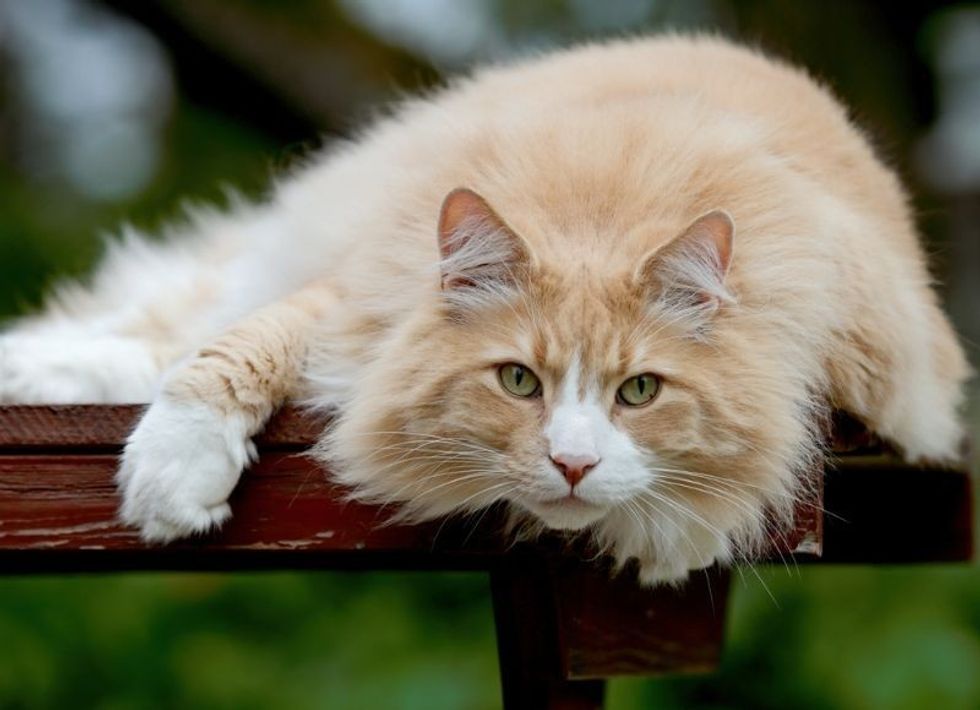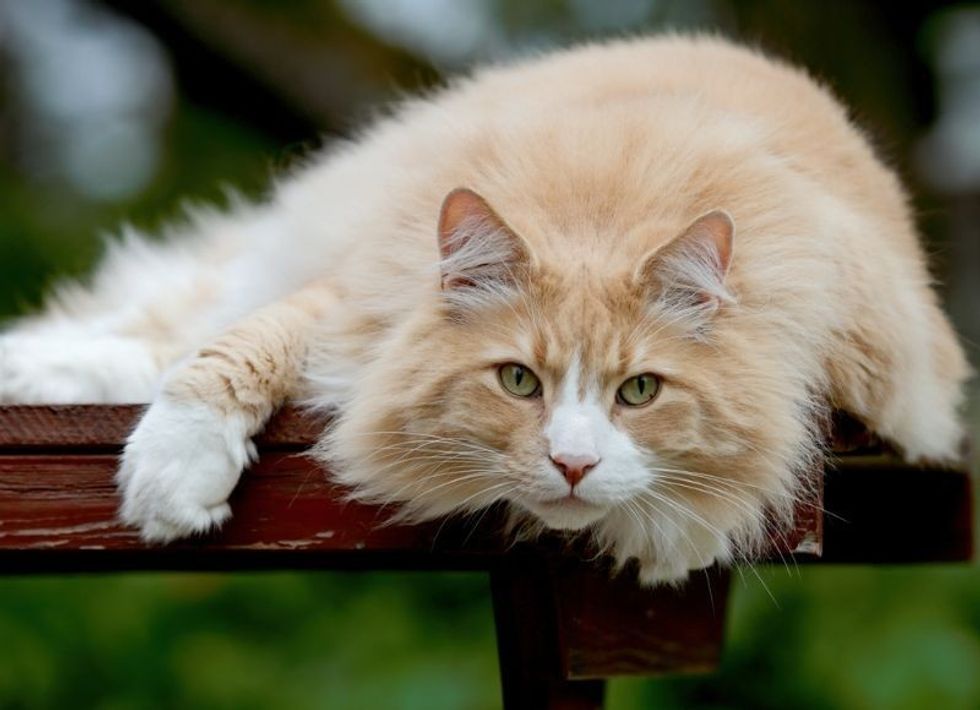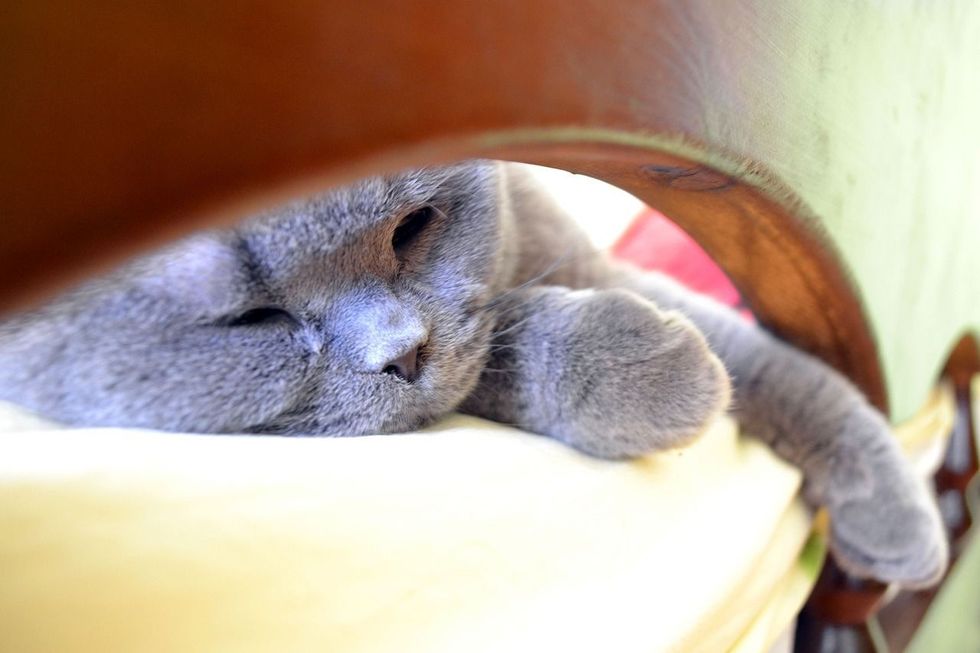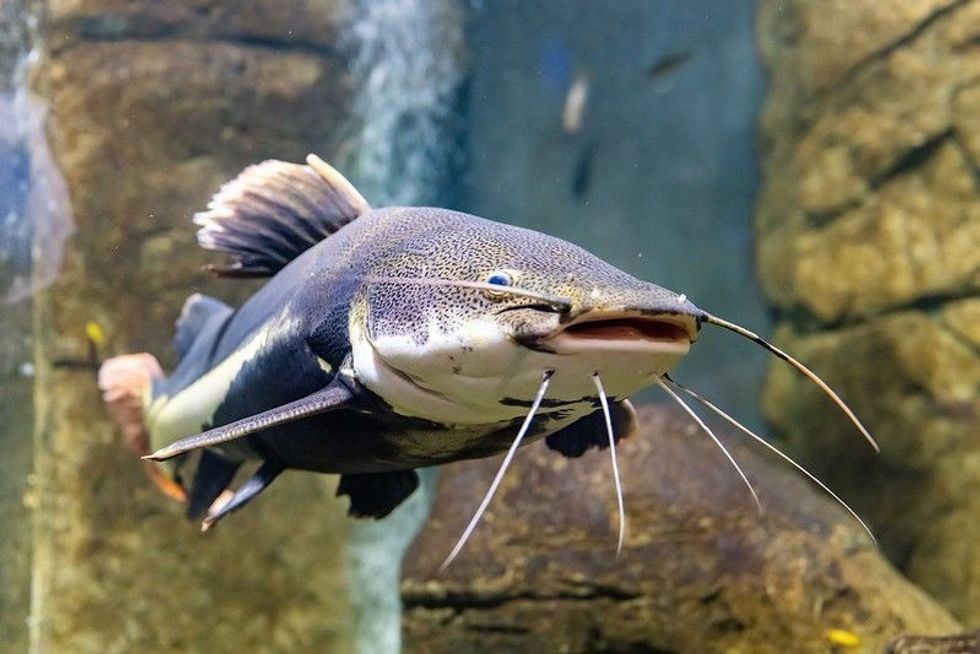Norwegian Forest Cat Size: How Big Do These Furry Friends Get?
Content
- Are Norwegian forest cats bigger than Maine Coons?
- Norwegian Forest Cat Physical Characteristics
- Norwegian Forest Cat Size And Weight
- Norwegian Forest Kitten Size
- How long does it take for Norwegian forest cats to grow full size?
- Male vs Female Norwegian Cat Size
- Adopting A Cat From Norwegian Forest Cat Rescue Or A Shelter
The Norwegian forest cat, nicknamed Wegie in the US, is a beautiful purebred domestic cat native to northern Europe.
This eye-catching cat is one of the most popular cat breeds all over America, Europe, and Canada. The late King Olaf of Norway designated the forest cat as the official cat of Norway.
The Norwegian forest cat breed is an ancient cat breed with its first origin in Norway about 4,000 years ago. In Norway, these cats are referred to as Skogkatt, which means forest cat in the Norwegian language, so when the cat was imported to North America, it was named the Norwegian forest cat.
There was a belief that the Norwegian forest cat breed's ancestors were brought to Norway by the Vikings around 1000 AD, who traveled along with them as mousers to safeguard ships and farms from rodents.
The forest cat has also been prominently figured in Norse fairy tales. In accordance with one of the Nordic legends, it is stated that these forest cats had pulled the goddess Freya's chariot.
During the time of World War II, the breed nearly vanished, then efforts of local Norwegian cat fanciers helped the forest cat breed revive by creating an official breeding program. In the '70s, the cat breed was registered with the European Federation Internationale Feline.
In 1977, FIFe (Federation Internationale Feline) granted official recognition to the breed. After 10 years, the Cat Fanciers Association (CFA) recognized the breed and granted forest cats full championship status in 1993.
Today, notable registries throughout the world have embraced Norwegian forest cats. The Norwegian forest cat breed is a muscular, semi-longhaired cat that resembles the Maine Coon cat breed in body stature but has its own, distinct characteristics.
It has a rugged appearance with a thick, water-resistant coat of glossy hair. Its long topcoat and a woolly undercoat help this natural breed adapt to a cold climate.
The forest cat's personality is calm, bold, and affectionate. It has an excellent temperament and is sociable. These cats are good with children and get along with other pets in the family, such as dogs or cats.
If you like reading the article so far, then check out our collection of other articles, such as when do male cats start spraying and when do cats stop growing.
Are Norwegian forest cats bigger than Maine Coons?
Norwegian forest cats are large, muscular, heavy, and strongly built and are two times the size of an average domestic cat.
As their name would suggest, they are huge cats with a double-coat and look impressive like a hunter. The adult cat typically grows to an average height of 9-12 in (22.8-30.4 cm) and weighs about 12-16 lb (5.4-7.2 kg).
The stocky Norwegian forest cat is often compared to the similarly-looking Maine coon cat. They are the two of the most giant cat breeds domesticated in the world. As per studies, Norwegian forest cats are slightly more slender in size than Maine Coon cats.
However, a fully grown Maine Coon cat is a bit of a bigger breed as it weighs around 10-20 lb (4.5-9 kg) and grows to a height of 10-16 in (25.4-40.6 cm). The Norwegian forest cat is possibly not the biggest cat globally, but it is considerably large and stands fourth in the battle of big cats.
These gorgeous cats make excellent pets, and you would be happy owning one.
Norwegian Forest Cat Physical Characteristics
The Norwegian forest cat, which might look like a bit of a mountain cat, is a domesticated breed, and life with one is impressively loving and affectionate. These cats have a gentle nature and are very adoring towards their human owners.
These cats take time to trust and form relationships with their owners, but the Norwegian cat makes a loyal and friendly companion once it is connected to you. Norwegian forest cats have some specific characteristics that set them apart from other similar medium-long-haired breeds.
The breed has a well-built, long, athletic body with a triangular head and a thick, muscular neck. Their tufted ears are medium-sized, broad at the base, and high set.
Their eyes are large, almond-shaped, and can be of any color. The forest cat breed has a medium-length muzzle, a strong chin, long legs, and a bushy tail.
These cats have strong claws which make them good climbers, and they can even climb rocks.
These little Norwegian forest cats are tough and can survive extremely harsh environments due to their unique fur and robust build. The breed's semi-long, water-resistant double coat consists of coarse fur over a dense undercoat, and tufted paws insulate them from harsh weather and keep them warm in colder climates.
Wegies come in various coat colors and patterns. The standard coat colors are black, brown, cream, golden, and silver with or without white. They also have colors and patterns like tortoiseshell, solid, calico, tabby, and bicolor fur.
Norwegian Forest Cat Size And Weight
Did you know that the Norwegian forest cat breed arrived in the US in 1979?
That's two years after registering with Europe's Federation Internationale Feline. Still, they have found themselves a niche among cat fanciers, and thus the forest cat ranks 18th in popularity among cat breeds in the US. Norwegian forest cat breeds are large and well-muscled with significant bone structure.
An adult cat's weight is around 22 lb (10 kg). The cat's height can range between 9-12 in (22.8-30.4 cm) at the shoulder. Its thick coat also adds to its presence and makes it look more plump.
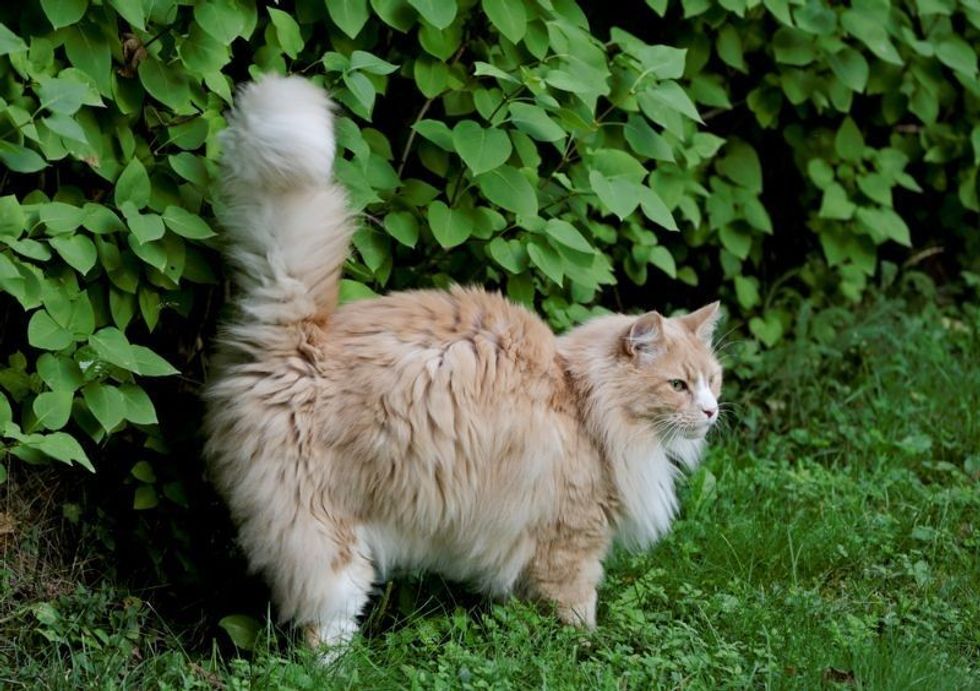
Norwegian Forest Kitten Size
The Norwegian forest kitten's friendly personality and temperament makes it a perfect pet for families with children and other pets. These cats are popular pets in Norway and Sweden.
In France, the Norwegian cat breed has been the fifth top-selling pet since 2003, where it is reported to have about 400-500 births per year. The Norwegian kitten size is usually larger than its average feline counterparts as the breed is strongly built and has a sturdy body.
The kitten's weight relies on its age, genetics, gender, and whether it's a purebred or a mixed breed.
The actual weight of Norwegian forest kittens is not precise, but newborn Maine coon kittens weigh around 0.19-0.37 lb (0.08-0.16 kg). Therefore, as both breeds are almost similar in size, we can assume the same or slight difference in their kitten size.
Generally, healthy kittens will put on around one pound a month between three to seven months of age. Based on the kitten's growth, this figure may alter.
Therefore, don't be worried if your kitten's weight gain is not a smooth line. Pet owners should ensure that their kitten is fed with a grain-free and high protein diet because deficiency of a proper diet may result in a smaller kitten in size and weight.
Norwegian forest cats, on average, have a litter size of four kittens, similar to other cats. These kittens are charming and love to play so can easily get along with children.
How long does it take for Norwegian forest cats to grow full size?
These sweet and gentle Norwegian forest cats enjoy human companionship and get along well in a family environment. These cats are bashful around new people but also very affectionate and sociable once they are comfortable with their new family.
Norwegian forest cats mature at a slow pace and take around five years to fully develop into an adult cat. Unlike other cat breeds, they retain their kitten-ish nature for far longer and possess significant muscle and bone mass at the age of five.
The average life expectancy of a Norwegian forest cat is between 12 to 16 years. These cats are generally healthy as they are natural breeds but suffer a few hereditary problems like other breeds.
This breed's two main known health issues are heart and kidney problems, but they are rare. The Norwegian forest cat is prone to other potential health issues like hip dysplasia and glycogen storage disease type IV. As with all cats, regular vet visits and vaccinations will keep your cat's health in good condition.
Male vs Female Norwegian Cat Size
The Norwegian forest cat enjoys its independence and is generally adaptable to all conditions. These cats are very loving towards humans and other animals. They don't demand constant attention and are happy to be independent.
They are alert, intelligent, and enjoy playing games and learning tricks. A full-grown female Norwegian cat will typically weigh around 8-18 lb (3.6-8 kg), while the male Norwegian cat weighs about 10-20 lb (4.5-9 kg).
Male forest cats tend to be larger than their female counterparts. A Norwegian forest cat does best on a meat-rich diet with lower carbohydrate levels. Since they are prone to obesity, it's essential to provide your pet with plenty of exercise.
The Wegie has a moderate activity level, and he enjoys being up high, running, and will cherish having a tall cat tree on which he can lounge for longer periods. It is known to be a great mouse hunter, so it will typically engage in chasing games like playing with balls or chasing a laser pointer dot.
These cats are also good climbers and live up to their forest cat name.
Adopting A Cat From Norwegian Forest Cat Rescue Or A Shelter
Depending on age, breeder, location, and other factors, Norwegian forest cats carry a high price tag of $900 to $1,500.
Wegies from prestigious pedigrees are relatively rare and raise a good value, up to $4,000 for a purebred of high stock. Shelters and rescues can offer far more viable options for adoption that might typically cost less.
Before you consider buying or adopting a Norwegian forest cat, here are a few factors to think about before making a final decision.
The Norwegian forest cat is huge and is an active cat. Thus, expected pet parents should be ready to play and ensure that their new pet has ample space to move around.
These cats have a semi-long thick fur coat that requires weekly brushing or grooming, but Wegies enjoy the process of being groomed. If not correctly handled, their thick coat will tangle and get knotted.
The Norwegian forest cat is prone to a few health problems. Although the occurrence of these diseases are rare it is important to be aware of these health issues. They might be prone to a condition called hypertrophic cardiomyopathy, which causes heart enlargement and can be life-threatening.
The Norwegian forest cat tolerates being left alone at home but make sure it has a place to climb and survey its domain. These cats are independent, and some don't like to be a lap cat, but they will demand petting, chin scratches, and head bumps.
Most Norwegian forest cats will follow their special person around as they move from room to room in the house.
Caring for a Norwegian forest cat is astoundingly easy.
The Norwegian forest cat has a specialized dense, a long double coat that forms a ruff at the chest, a neckband, a bushy tail as long as its body, britches on the rear legs, and thick tufting between the toes to keep the cat warm during the cold winters in Scandinavia.
Although they have an incredibly long fur coat, there will usually be only moderate shedding of fur with these cats.
They are skilled at taking care of their fur, so brushing twice a week using a bristle brush or stainless steel comb would be enough to keep them free of tangles. If you come across tangles, work them out gently without hurting your cat.
In times of heavy shedding, increase the grooming frequency to three to four times a week.
Brushing their teeth is necessary to prevent periodontal disease. Dental hygiene is important, so brush preferably daily or at least weekly. Daily, wipe the corners of their eyes with a soft, damp cloth to remove any discharge.
If there is any, use a separate cloth for each eye so that the infection may not spread to the other eye. Avoid using cotton swabs for cleaning their ears which can damage the interior of the ear. Once in a while, bathing is a good thing.
Like all cats, Wegies are particular about toilet hygiene, so keep a clean litter box. It's a good idea to keep your Norwegian forest cat indoors to protect him from any diseases spread by other cats, attacks by dogs, or other dangers. If possible, you can build a large outdoor enclosure where it can enjoy being outdoors safely.
Here at Kidadl, we have carefully created lots of interesting family-friendly facts for everyone to enjoy! If you liked our suggestions for Norwegian forest cat size, then take a look at why does a cat scratch itches or what is a baby hedgehog called.
We Want Your Photos!
More for You
See All
Master of Business Administration

Deepthi ReddyMaster of Business Administration
With an MBA under her belt, Deepthi has discovered her true calling in content writing. Her writing repertoire is diverse, covering travel, movies, pet care, parenting, animals and birds, and more. Her joy of learning and creating has helped her craft well-written and engaging articles. When she isn't writing, Deepthi enjoys exploring new cultures, trying different foods, and spending quality time with her two children aged 7 and 12.
Postgraduate Diploma in Management

Sakshi RaturiPostgraduate Diploma in Management
Sakshi has experience in marketing strategy, social media planning, and recruiting industry experts for capstone projects, she has displayed a commitment to enhancing their skills and knowledge. She has won multiple awards, including a Certificate of Appreciation for Creative Writing and a Certificate of Merit for Immaculate Turut, and is always seeking new opportunities to grow and develop.
Disclaimer
1) Kidadl is independent and to make our service free to you the reader we are supported by advertising. We hope you love our recommendations for products and services! What we suggest is selected independently by the Kidadl team. If you purchase using the Buy Now button we may earn a small commission. This does not influence our choices. Prices are correct and items are available at the time the article was published but we cannot guarantee that on the time of reading. Please note that Kidadl is a participant in the Amazon Services LLC Associates Program, an affiliate advertising program designed to provide a means for sites to earn advertising fees by advertising and linking to Amazon. We also link to other websites, but are not responsible for their content.
2) At Kidadl, we strive to recommend the very best activities and events. We will always aim to give you accurate information at the date of publication - however, information does change, so it’s important you do your own research, double-check and make the decision that is right for your family. We recognise that not all activities and ideas are appropriate for all children and families or in all circumstances. Our recommended activities are based on age but these are a guide. We recommend that these ideas are used as inspiration, that ideas are undertaken with appropriate adult supervision, and that each adult uses their own discretion and knowledge of their children to consider the safety and suitability. Kidadl cannot accept liability for the execution of these ideas, and parental supervision is advised at all times, as safety is paramount. Anyone using the information provided by Kidadl does so at their own risk and we can not accept liability if things go wrong.
3) Because we are an educational resource, we have quotes and facts about a range of historical and modern figures. We do not endorse the actions of or rhetoric of all the people included in these collections, but we think they are important for growing minds to learn about under the guidance of parents or guardians.
